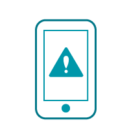Blog
3 ways communication technology can help prevent workplace violence in healthcare
Note: This is the third post in our series on workplace violence in hospitals. Read the first two: Workplace violence in healthcare: What does the data say? and How to decrease workplace violence in healthcare: 10 resources to explore
Workplace violence in healthcare isn’t an easy or simple challenge to address. As a leader in healthcare communications, we’d like to offer specific ways communication technology can help protect your healthcare staff.
First, it’s helpful to understand OSHA’s five building blocks for developing a violence prevention program in healthcare. Since they are the authority on occupational safety, this is good place to start.
OSHA’s five building blocks for developing a workplace violence protection program
- Management commitment and worker participation
- Worksite analysis and hazard identification
- Hazard prevention and control
- Safety and health training
- Recordkeeping and program evaluation
Communication technology can help address hazard prevention and control, which includes engineering controls and administrative controls. Let’s dive into both of these a bit more.
Engineering controls
Engineering controls are physical interventions that create a barrier between healthcare staff and situations with a potential for violence. Locks, metal detectors, accessible exit routes, and panic buttons are all examples of engineering controls to help protect healthcare staff.
It can be difficult to implement some physical barriers in areas like the emergency room and waiting rooms. Without these barriers, there’s a greater risk for violence. This brings us to the first way communication technology can protect staff from workplace violence.
1. Provide staff with mobile devices equipped for duress communications
This may be key to help protect staff, especially in environments where physical barriers aren’t possible. Many healthcare-grade, purpose-built devices (like a Spectralink smartphone) include a duress or panic button. Combined with middleware software (like Spok clinical alerting) a designated team like a charge nurse and hospital security can be alerted with the exact location of the staff member in need when the button is pushed. For example:
Mobilize security teams for staff safety:

Faced with a security event, the nurse presses the duress button on her Spectralink device.

Spok clinical alerting sends a notification with the nurse’s exact location to security and the floor charge nurse.

Security team arrives quickly to assist.
2. Consider additional capabilities in your communication technology
Some communication devices have additional capabilities to send for help, even if the staff member is unable to access the panic button. They can detect out-of-the-ordinary motion, lack of motion, and device positioning to indicate unusual behavior. For example, the device can detect if a staff member falls, and can send a notification to nearby staff for help.
Rally nearby staff for man-down events:

The environmental services team member slips and falls in a patient room, injuring himself.

The team member’s Spectralink device detects the unexpected motion of the fall.

Spok clinical alerting sends a notification with the team member’s exact location to other nearby staff.

The nearest available staff members arrive quickly to assist.
Administrative controls
These controls are changes to the work practices and administrative procedures that help prevent violent incidents, which includes policies and reporting.
3. Use data provided by your communication technology
Your communication technology should provide you with data to help you track response times to violent events help improve your processes. Data on the communications that took place during a violent incident may help you determine necessary actions to help prevent recurrences or improve response speed.
Though changing workplace violence in healthcare won’t happen through technology alone, communication is key in the critical moments when seconds and minutes make a significant difference.
Spok and Spectralink are partners in providing solutions to quickly alert nearby staff members and/or the security team of safety events, ensuring the appropriate help can arrive and resolve the situation quickly.






